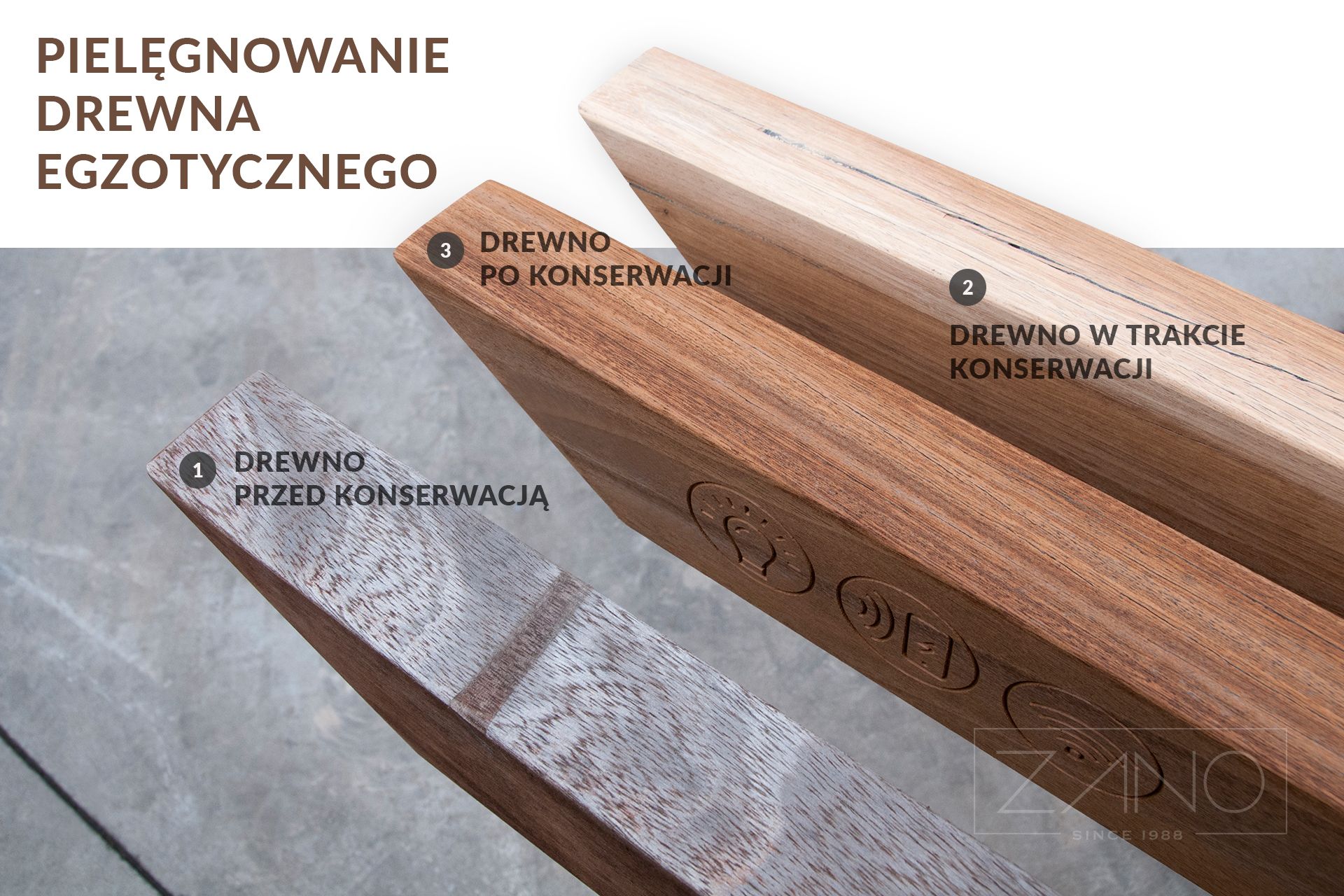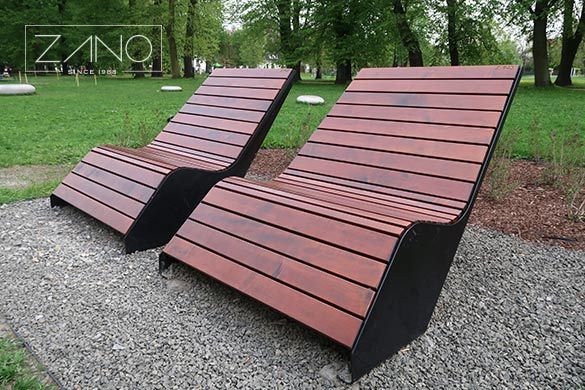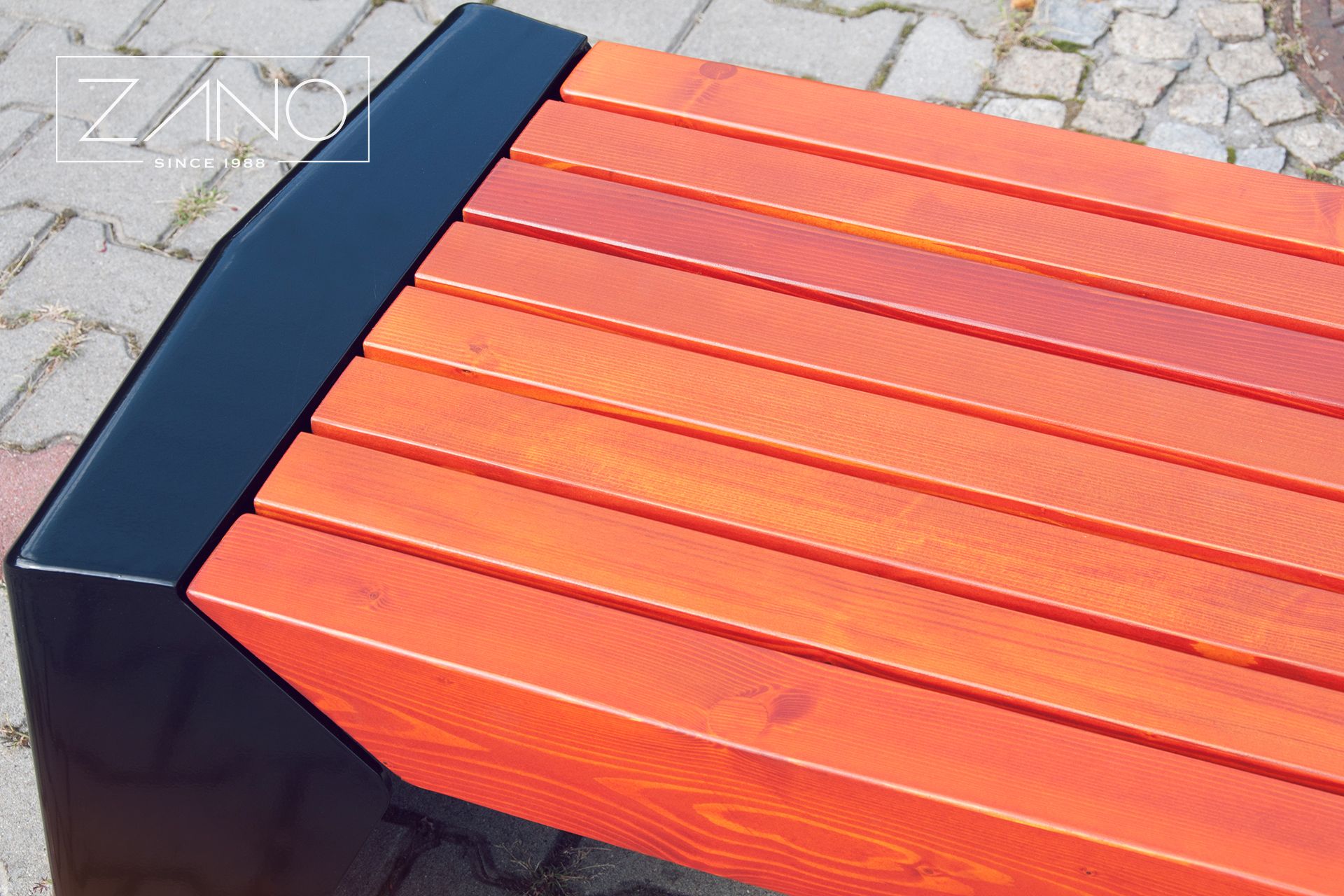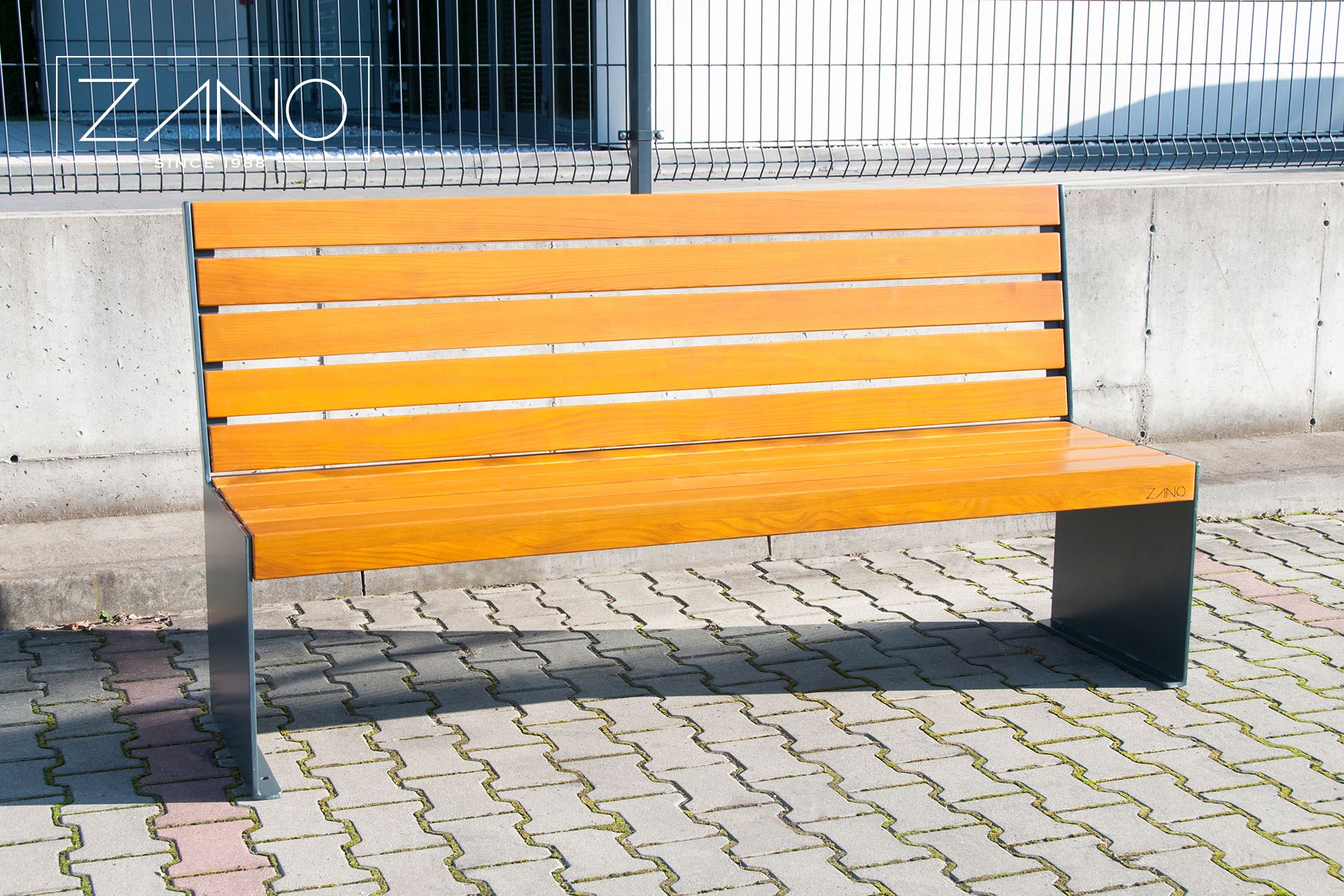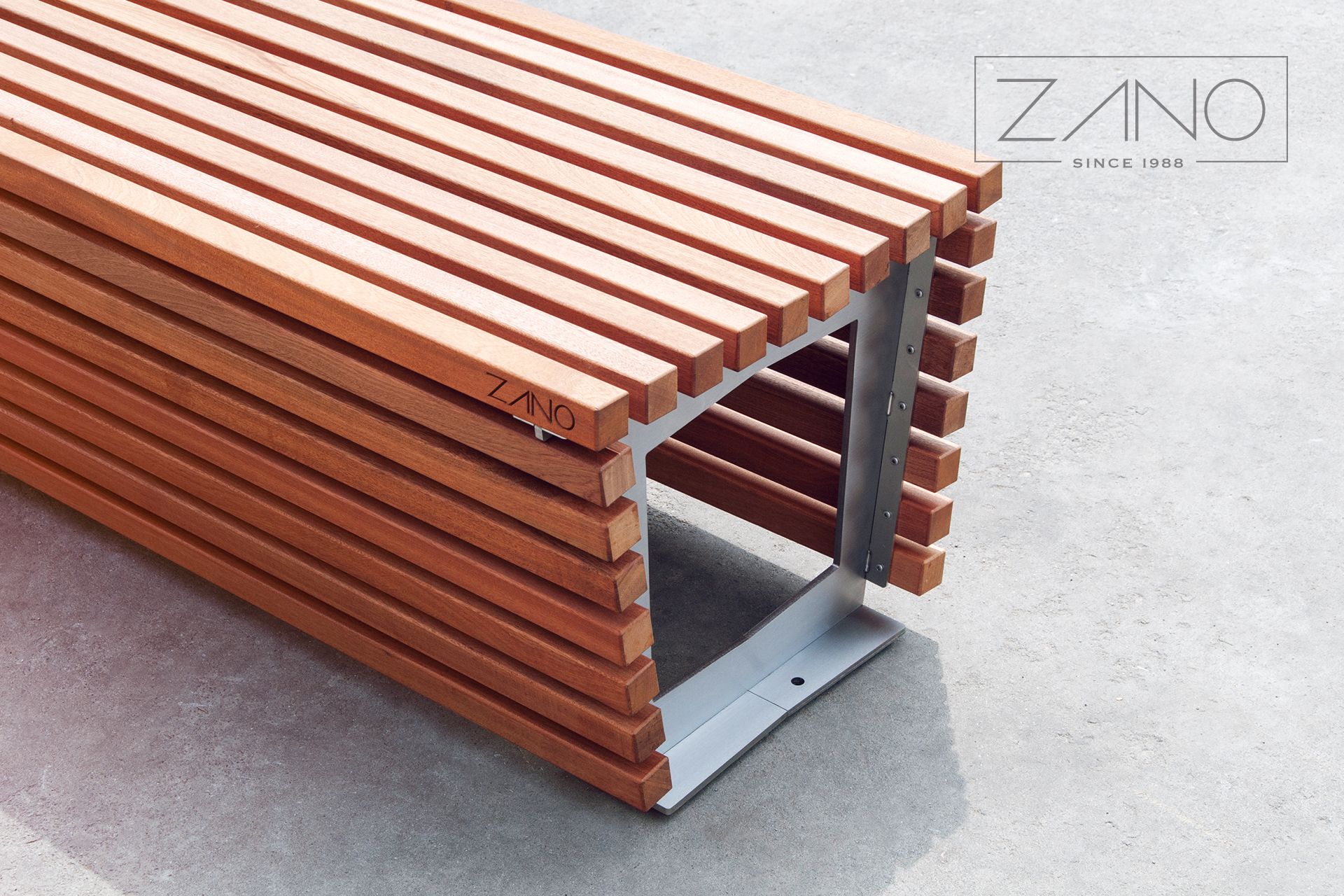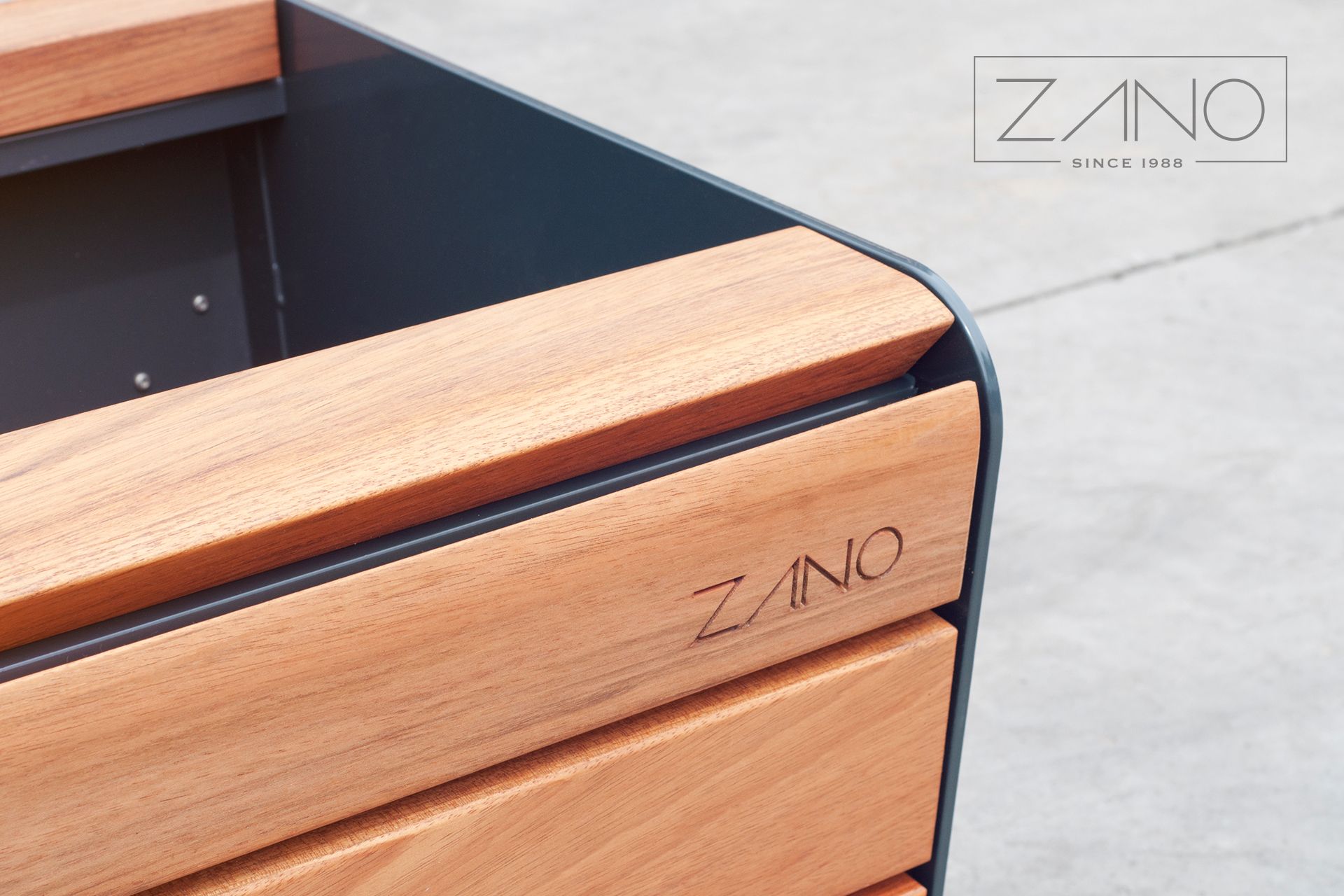How to maintain the wood in our furniture to keep it looking fresh and appealing?
A critical characteristic of wooden components is their vulnerability to weather elements like sunlight, wind, and moisture. It's impossible to completely shield wood from the inevitable natural aging process over many years. To extend the fresh appearance of the boards, we apply varnish or oil during production. It is also notable that the wood in our inventory is categorized into:
- European coniferous wood - soft - we protect them with varnish in various colors (see on the left "wood color palette")
- exotic wood - hard - we protect it with impregnation and then oiling.
European Softwood
When coniferous wood is coated with varnish, it maintains its original look for a longer period compared to exotic wood treated with oil. This is because varnish creates a hardy layer while oil tends to wash away and penetrate into the woodâs structure. However, if coniferous wood endures wear such as chipped varnish or physical damages and is not maintained, all damaged boards must be replaced. Maintaining exotic wood follows a different protocol...
Exotic wood - hardwood
While exotic wood fades quicker than varnished wood, it possesses a texture that enables its rejuvenation and preservation. This type of wood naturally absorbs oil, which rain can wash away, leaving the surface susceptible to drying out under the sun's harsh rays. Regular oiling is crucial for maintaining its condition. Considering the varying levels of maintenance required, we recommend two approaches:
- For wood that still has a fresh appearance, half a year after purchase, clean the boards (water with dishwashing detergent) - so that the oil is not mixed with dirt - and then oil the visible surfaces. This process should be repeated every 6 months. This is enough for the wood to have a long-lasting favorable appearance with intense colors.
- The second case is when the boards have already turned gray and faded. Here, the work should begin by sanding the surface with sandpaper (first with a coarser grit, e.g. 180; then with a smaller grit, e.g. 240 /300) until the gray coating is removed; ideally, the sanding should be done on the visible surfaces, i.e. the tops/sides - so as not to unscrew the boards; screwing the boards back on requires skill and is time-consuming; then, a layer of impregnant should be applied, followed by a layer of oil.
Displayed below are planks from the same collection, shown after treatment (sanding and oiling), and prior to any treatment.
- Each plank at the beginning looked like the one in the photo with number 1. The planks have not been maintained and have been exposed to outdoor conditions for a long time (a period of about 2 years).
- Number 2 shows the plank after sanding down its surface and filling in the cracks (optional action).
- Board number 3 shows a board that has been sanded down, impregnated and coated with a layer of oil. Please note the differences between planks 1 and 3. This is the same plank - before and after maintenance. It looks like new. The photos highlight an important advantage of the material hardwood - exotic wood. They can be very easily restored to a fresh and new condition.
